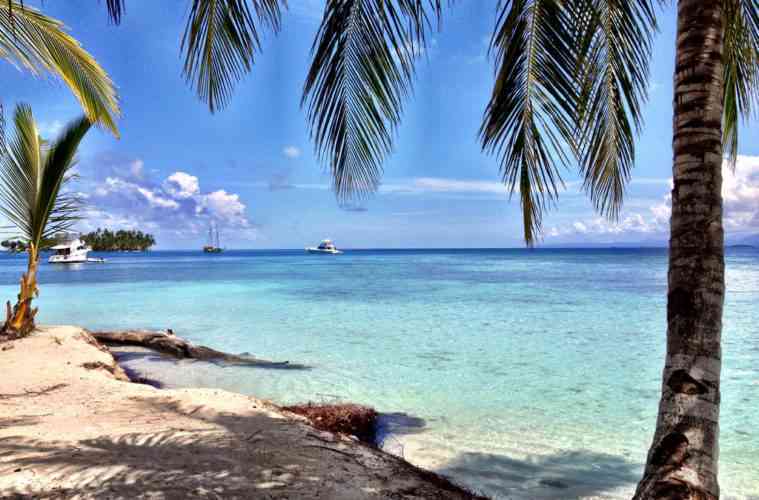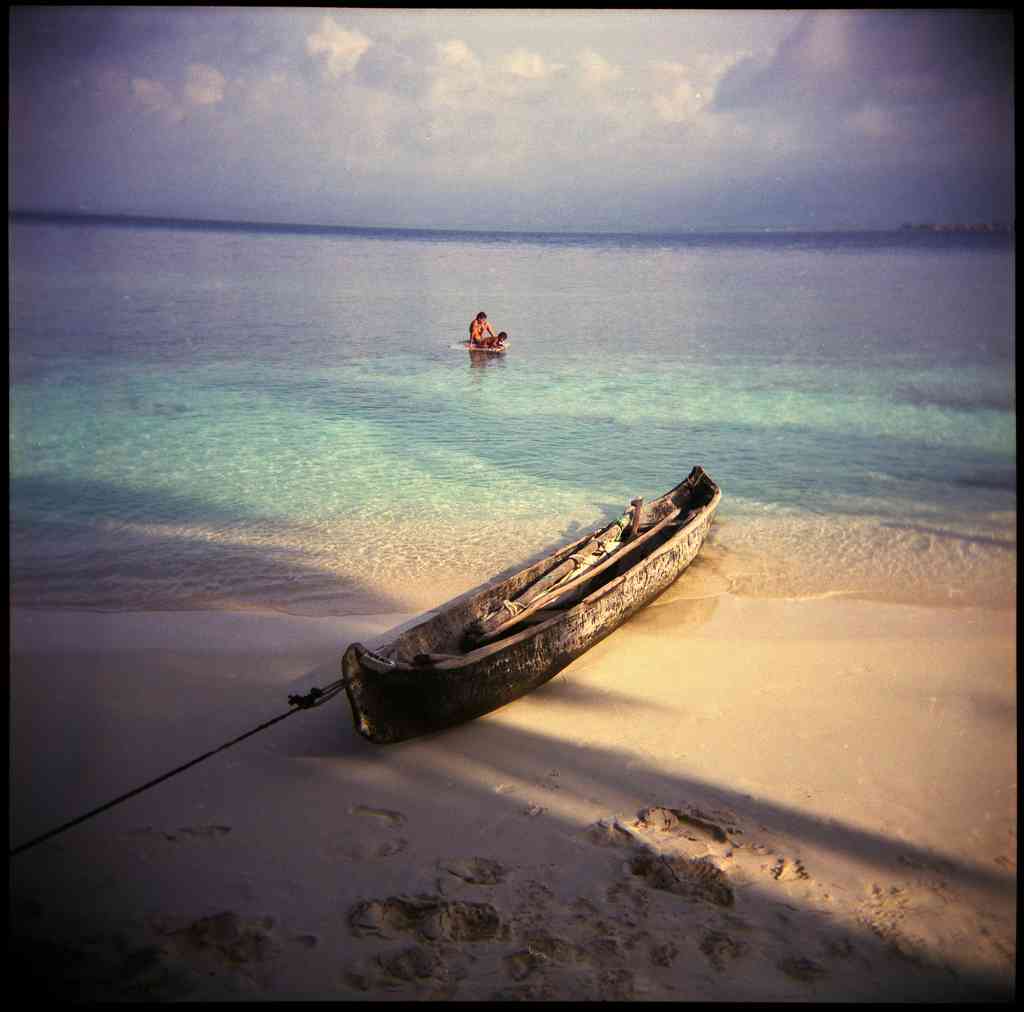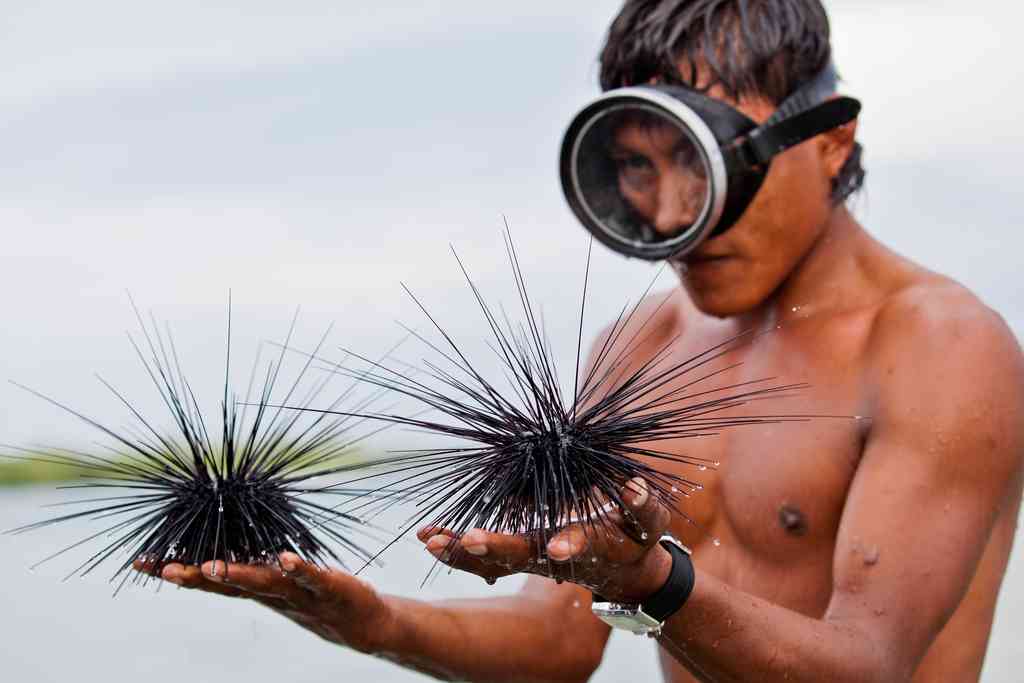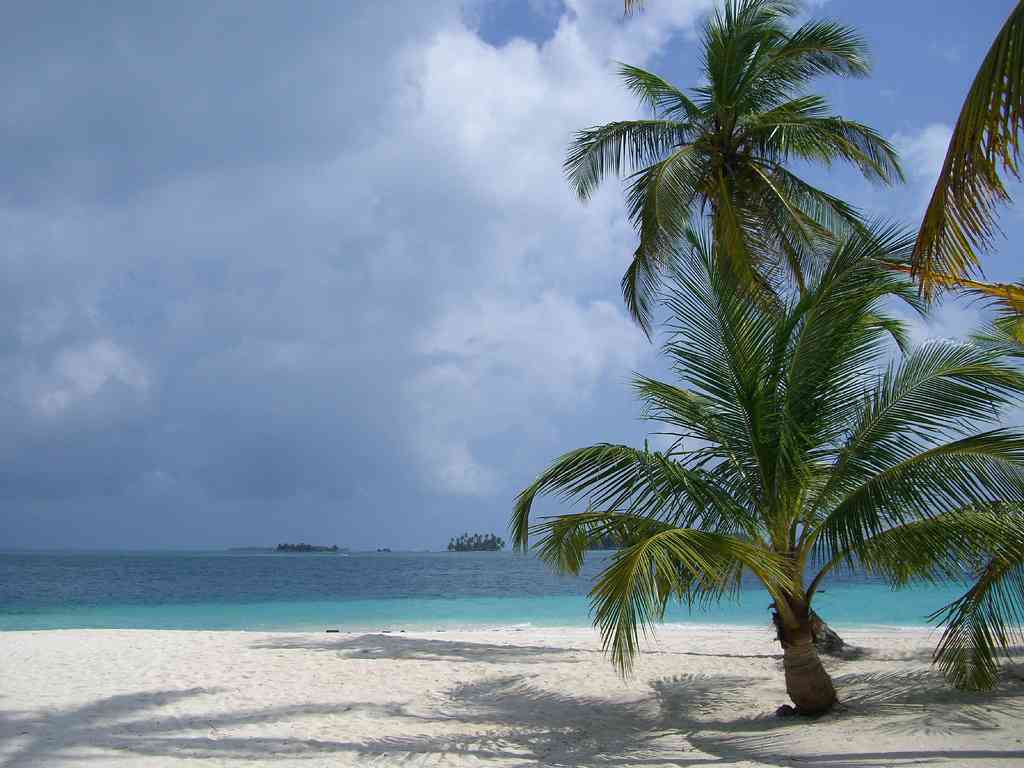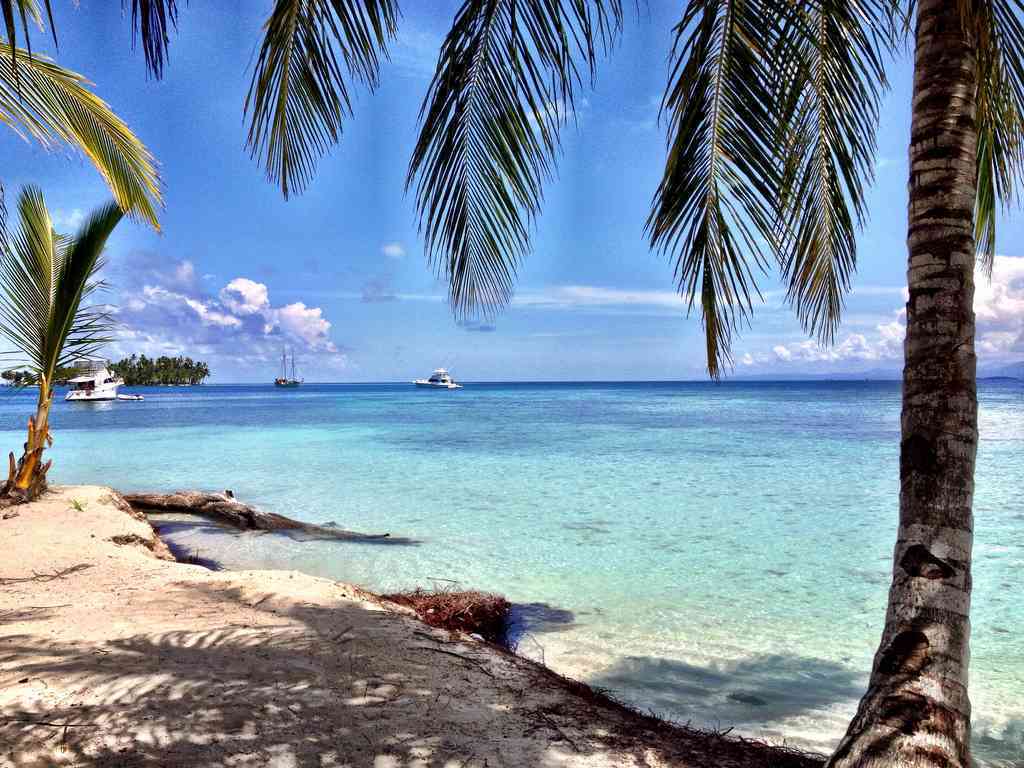A few years ago, I was on a Royal Olympic cruise around the Caribbean – my first cruise – and we made a pit stop at the San Blas Islands. I can still see the beautiful, unique, one mile in circumference San Blas islands with their crystal clear, warm water and giant conch shells scattered all around to this day. Know how people always throw around the term”island paradise”? Well, the San Blas Islands actually deserve it. They remain relatively undiscovered by tourists, so I thought I’d share some information about them for any travelers looking to arrange a more ‘off-the-beaten-path’ tropical vacation.
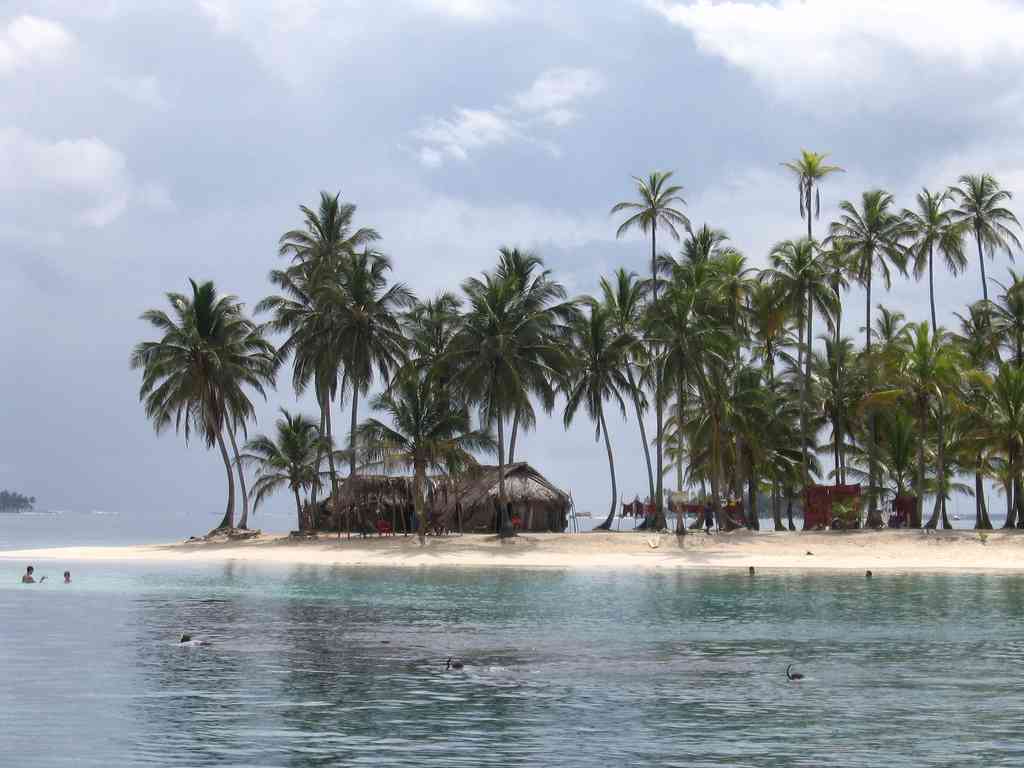
This is the size of one of the islands. That’s it – only about ten feet more of land to the right of this photo.
Disclaimer: I visited the San Blas islands some time ago, back when I had a shitty camera and an even shittier sense of photography. So I will be using other, better pictures of the stunning San Blas islands (don’t even know where my pictures of the trip are at the moment – bad traveler).
Getting to the San Blas Islands
There are 378 islands in the San Blas island chain, located north of Panama’s coast, but only 49 are inhabited. Most of them are quite tiny; I remember the island we landed on took a total of 8 minutes to circle. On foot.
You can choose to go by plane, which means only a 20-30 minute flight from Panama City, but most people prefer to sail to the islands, and stop off at multiple destinations.
Boats can be chartered from either Panama’s northern coast or Cartagena, Colombia. Water taxis from Panama to the islands usually depart from the Golfo de San Blas coast.
The standard transportation the locals use to travel between the islands is dug-out canoes carved from a tree trunk, and that’s how I got rowed up to my destination.
Locals of the San Blas Islands: The Kuna Indians
The locals are Kuna Indians, and they are among the most welcoming and friendly people I have ever met. The Kuna Yala are self-governing, meaning Panama pretty much leaves them to themselves. This has allowed them to keep their cultural traditions and language afloat. The Kuna mostly rely on fishing and coconut sales for income, in addition to tourism.
On the island we visited, the resident Kuna Indians told us that they co-owned the island with members of their extended families, and that they all co-owned neighboring islands as well. So what happens is that each family uses the island for a certain period of time and then switches islands with the co-owners throughout the year. I thought this was a uniquely cool living arrangement, and as far as living arrangements go, you could do worse than long-term island hopping. Especially in this tropical, thankfully hurricane-less paradise.
San Blas Islands: Environment
The water here is crystal clear, light blue, and warm. Not warm as in comfortable-to-dive-in; warm as in lower-yourself-in-gently-so-you-don’t-burn warm. Which makes sense considering the islands are located only 9 degrees north of the equator.
Conch shells are scattered throughout the beach. On the island we visited, the Kuna Indians have used conches in every way possible to decorate their homes.
Island activities: snorkeling, swimming, diving, and sunbathing. And then hopping to the next island to rinse and repeat. So life is pretty good there.
Moral of the story is, if you ever find yourself in the area, visit these islands! Not only for the stunning natural beauty, but also to see the Kuna tribe’s local way of life. I guarantee you will have a unique experience.
Have you ever visited the San Blas Islands? What’s your favorite island paradise?

